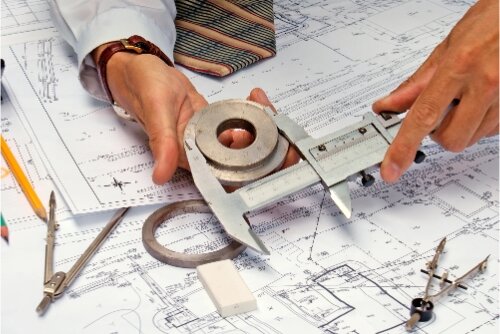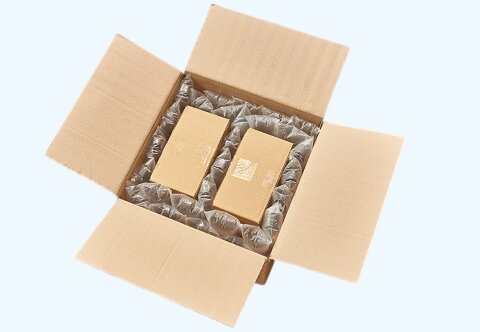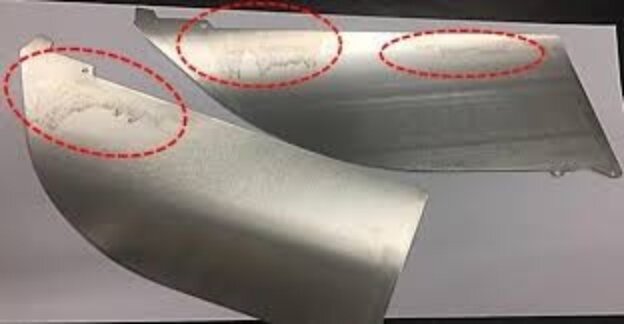Every manufacturer faces a critical decision when selecting metal-cutting technology. High material costs, tight production schedules, and quality requirements can make choosing between plasma and laser cutting challenging. Both technologies offer distinct advantages, but picking the wrong one could impact your bottom line.
For quick projects requiring basic cuts on thick metals, plasma cutting proves more cost-effective and faster. However, laser cutting excels in precision work, offering superior edge quality and tighter tolerances, making it ideal for complex designs and thin materials.
Ready to explore the detailed comparison? Let’s examine how each method stacks up in key performance areas that matter to your projects.
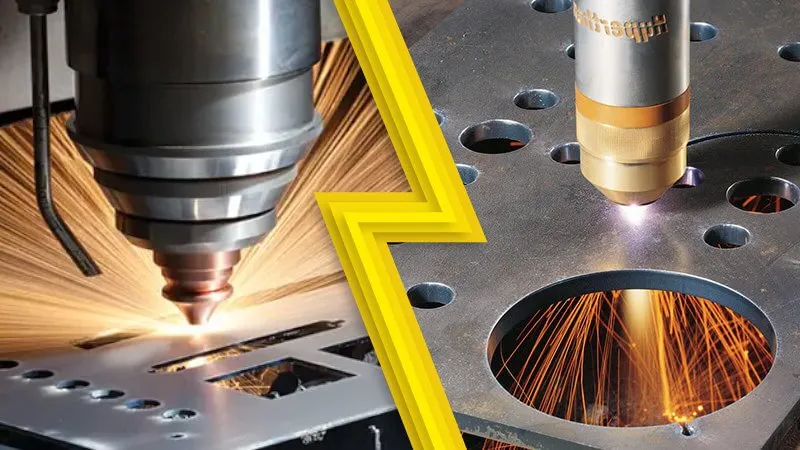
Plasma Cutting
Metal cutting innovation meets practical efficiency. Plasma cutting transformed industrial metal fabrication by offering fast, cost-effective solutions for thick metal processing. This section breaks down the core aspects of plasma technology.
What is Plasma Cutting?
Plasma cutting harnesses high-temperature ionized gas to slice through conductive metals. The process creates a focused arc that reaches temperatures up to 40,000°F, making it powerful enough to cut through the toughest metals.
How Plasma Cutting Works
The process starts when compressed gas flows through a narrow nozzle. An electric arc ionizes this gas, creating a plasma that melts the metal and blows away the molten material. Think of it as a controlled lightning bolt that precisely cuts metal.
Advantages of Plasma Cutting
Speed and Efficiency
Plasma cutting moves fast, especially on thick materials. It can cut through 2-inch steel five times faster than other methods. Operating costs stay low due to minimal consumable parts and quick setup times.
Versatility of Materials
This technology handles various conductive metals:
- Steel up to 6 inches thick
- Aluminum of all grades
- Copper and brass
- Stainless steel
Limitations of Plasma Cutting
Heat Affected Zone (HAZ)
The intense heat creates a wider HAZ than laser cutting. This affects:
- Material properties near the cut
- Post-processing requirements
- Overall part quality
Precision Issues
Plasma cutting shows limitations in detail work:
- Wider kerf width than laser cutting
- Less precise on intricate patterns
- Angular edges may need secondary operations
- Minimum hole diameter restricted to material thickness
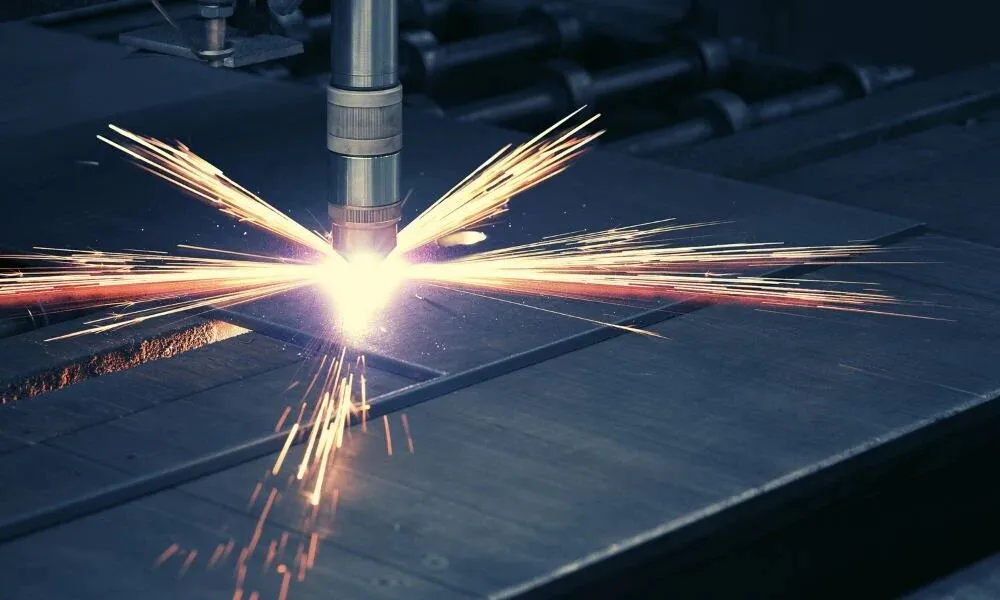
Laser Cutting
Modern manufacturing demands precision, and this section explores how laser technology meets these needs. Laser cutting represents the pinnacle of accuracy in metal fabrication, offering capabilities that transform complex designs into reality.
What is Laser Cutting?
Laser cutting uses focused light energy to melt, burn, or vaporize materials with microscopic precision. This technology creates a beam of concentrated light hot enough to cut through various materials while maintaining exceptional accuracy.
How Laser Cutting Works
A high-powered laser generates an intense beam of light. This beam focuses through optics onto the material surface, creating a localized heating zone. Computer-controlled mirrors guide the beam along programmed paths, ensuring precise cuts.
Advantages of Laser Cutting
High Precision and Accuracy
Laser cutting achieves remarkable precision:
- Tolerances as tight as ±0.004 inches
- Complex patterns and intricate details
- Consistent quality across production runs
Clean Edges and Minimal Waste
The technology produces superior results:
- Mirror-finish cut edges
- Minimal material distortion
- Reduced need for secondary finishing
- Lower scrap rates
Limitations of Laser Cutting
Material Limitations
Not all materials work well with laser cutting:
- Thickness restrictions for metals
- Reflective materials need special handling
- Some materials create hazardous fumes
Higher Initial Costs
Financial considerations include:
- Substantial equipment investment
- Regular maintenance requirements
- Higher energy consumption
- Specialized operator training
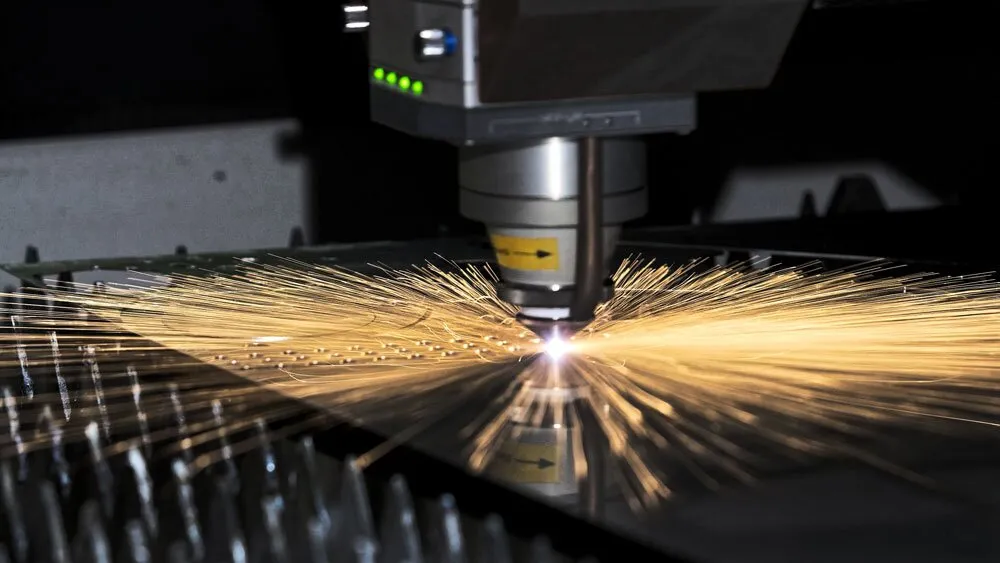
Comparing Plasma Cutting vs Laser Cutting
Metal-cutting technology plays a direct role in part quality, cost, and production timelines. Breaking down the differences between plasma and laser helps pinpoint which method fits specific project needs. Here’s what sets them apart.
Accuracy
Laser cutting achieves precision levels of ±0.004 inches, making it perfect for complex designs. The focused beam creates sharp corners and straight edges. For electronics housings or medical parts, this level of detail proves critical.
Plasma cutting hits ±0.02 inches tolerance. While less precise, this accuracy works well for structural parts, frames, and brackets. The wider kerf affects edge quality but rarely impacts function.
Material
Laser beams cut through steel, aluminum, and stainless steel effectively. The heat-concentrated beam leaves minimal warping. On carbon steel under 1 inch, the cut edges stay clean and dross-free.
Plasma handles conductive metals like steel and aluminum. It excels with rusty or painted surfaces. The ionized gas blast clears surface contaminants during cutting.
Speed
Fast cutting speeds set plasma apart for thick materials. On 1-inch steel, plasma cuts at 20 inches per minute. This makes it ideal for high-volume production runs of heavy parts.
Laser cutting leads in thin materials, hitting 150 inches per minute on 18-gauge steel. The focused beam moves quickly through sheet metal. For detailed parts under 1/4 inch, laser cutting reduces production time.
Reflective Material Compatibility
Fiber lasers cut copper, brass, and aluminum without issues. The 1070nm wavelength beam maintains stability on shiny surfaces. CO2 lasers struggle with these materials, causing inconsistent cuts.
Sheet Thickness
Plasma systems handle metal from 26 gauge up to 6 inches thick. The powerful plasma arc cuts through thick plate steel smoothly. Many systems operate best between 1/2 inch and 2 inches.
Laser cutting shows optimal results for up to 1 inch of mild steel. Thin materials down to 0.02 inches cut cleanly. Beyond 1 inch, cut quality drops, and speed slows significantly.
Cost
Plasma cutting offers lower equipment costs, starting at around $5,000 for basic systems. Operating costs stay low due to simple consumables. Maintenance needs remain minimal.
Laser systems require higher investment, often $100,000+. However, their precision and versatility offset costs for high-volume operations. Running costs include gases and specialized maintenance.
Additional Functions
Laser systems mark, engrave, and etch parts during cutting. This adds value through part numbering or branding. Modern systems also handle tube cutting and beveling.
Plasma units focus solely on cutting tasks. While simpler, they deliver reliable performance for straightforward cutting needs. Some high-end systems offer basic beveling capability.
Plasma Cutting vs Laser Cutting: Quick Comparison
The comparison table below gives a quick overview of the differences.
| Feature | Plasma Cutting | Laser Cutting |
|---|---|---|
| Accuracy | ±0.02 inches | ±0.004 inches |
| Best Materials | Steel, aluminum, conductive metals, rusty/painted surfaces | Steel, aluminum, stainless steel, copper, brass |
| Max Speed (1" Steel) | 20 inches/min | 3 inches/min |
| Max Speed (18 gauge) | 100 inches/min | 150 inches/min |
| Thickness Range | 26 gauge - 6 inches | 0.02 - 1 inch |
| Equipment Cost | $5,000+ | $100,000+ |
| Edge Quality | Good | Excellent |
| Additional Functions | Basic beveling | Marking, engraving, etching, tube cutting, beveling |
| Heat Affected Zone (HAZ) | Larger | Smaller |
| Versatility | More versatile for thicker materials and rough surfaces | More precise for intricate designs and thinner materials |
| Maintenance | Requires more frequent maintenance due to consumable parts | Less maintenance required |
| Noise Level | Louder | Quieter |
| Environmental Impact | Higher due to plasma gas and fumes | Lower |
Plasma Cutting vs Laser Cutting: Which is Better?
The choice between laser and plasma depends on three key factors: material thickness, required precision, and production budget. Each method brings distinct advantages that match different manufacturing needs.
For Thin Materials (Under 1 inch)
Laser cutting takes the lead when working with:
- Sheet metal parts (0.02-1 inch)
- Precision components (±0.004″)
- Complex designs with tight corners
- Parts needing clean edges
- Multi-function requirements (cutting + marking)
For Thick Materials (Over 1 inch)
Plasma cutting proves more effective for:
- Heavy plate (1-6 inches)
- Structural components
- High-volume production runs
- Basic cut patterns
- Projects with tight budgets
Cost-Benefit Analysis
Break down your decision with these questions:
- What’s your typical material thickness?
- Does part accuracy affect function?
- What’s your monthly production volume?
- Do you need secondary operations like marking?
- What’s your equipment budget range?
Choose plasma for robust cutting of thick materials at lower costs. Pick a laser for precision work on thinner materials where quality outweighs the initial investment.
Conclusion
Both plasma and laser cutting offer distinct advantages that suit different manufacturing needs. Plasma excels for thick, heavy materials at a lower cost, while laser cutting produces precision parts with clean edges. The optimal choice depends on factors like material thickness, part complexity, production volume, and available budget.
Our advanced manufacturing capabilities in plasma cutting, laser cutting, CNC machining, and metal stamping ensure your project meets specifications. Whether you require the speed and cost-effectiveness of plasma or the precision of laser cutting, our engineering team can help you explore the optimal solution for your next project. Contact us today to get started.
FAQs
Which method is better for thick materials?
Plasma cutting is the better choice for cutting thick metal plates over 1 inch. Its powerful plasma arc can quickly and efficiently slice through heavy steel and aluminum, making it ideal for structural components and high-volume production.
What safety measures are required for each method?
Plasma cutting requires proper ventilation due to fumes, as well as protective equipment like flame-resistant clothing, face shields, and gloves. Laser cutting poses risks from the intense light beam, so safety goggles, light curtains, and controlled work areas are essential.
What should you not cut with a plasma cutter?
Plasma cutters should not be used on non-conductive materials like wood, plastic, or ceramic, as the plasma arc requires a conductive medium to function effectively. Additionally, highly reflective metals like copper and brass may cause issues with plasma systems.
Hey, I'm Kevin Lee

For the past 10 years, I’ve been immersed in various forms of sheet metal fabrication, sharing cool insights here from my experiences across diverse workshops.
Get in touch

Kevin Lee
I have over ten years of professional experience in sheet metal fabrication, specializing in laser cutting, bending, welding, and surface treatment techniques. As the Technical Director at Shengen, I am committed to solving complex manufacturing challenges and driving innovation and quality in each project.


